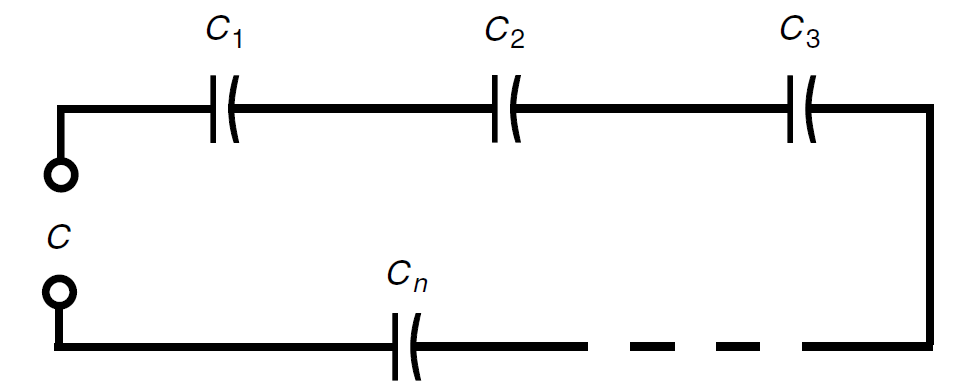


 الفيزياء الكلاسيكية
الفيزياء الكلاسيكية
 الكهربائية والمغناطيسية
الكهربائية والمغناطيسية
 علم البصريات
علم البصريات
 الفيزياء الحديثة
الفيزياء الحديثة
 النظرية النسبية
النظرية النسبية
 الفيزياء النووية
الفيزياء النووية
 فيزياء الحالة الصلبة
فيزياء الحالة الصلبة
 الليزر
الليزر
 علم الفلك
علم الفلك
 المجموعة الشمسية
المجموعة الشمسية
 الطاقة البديلة
الطاقة البديلة
 الفيزياء والعلوم الأخرى
الفيزياء والعلوم الأخرى
 مواضيع عامة في الفيزياء
مواضيع عامة في الفيزياء|
Read More
Date: 19-12-2020
Date: 17-10-2020
Date: 22-12-2020
|
CAPACITORS IN SERIES
With capacitors, there is rarely any significant mutual interaction. At very high ac frequencies, however, interelectrode capacitance can sometimes be a problem for engineers. This effect, which shows up as an inherent tiny capacitance between wires that run near and parallel to each other, is almost always undesirable in practical circuits.
Capacitors in series add together like resistors or inductors in parallel. If you connect two capacitors of the same value in series, the result is half the capacitance of either component alone. In general, if there are several capacitors in series, the composite value is less than that of any of the single components. It is important that you always use the same size units when determining the capacitance of any combination. Don’t mix microfarads with picofarads. The answer you get will be in whichever size units you use for the individual components.
Suppose that you have several capacitors with values C1, C2, C3,…, Cn connected in series (Fig. 1). You can find the reciprocal of the total capacitance 1/C using the following formula:
1/C = 1/C1+1/C2+1/C3+... +1/Cn
The total capacitance C is found by taking the reciprocal of the number you get for 1/C.

Fig. 1. Capacitances in series add like resistances or inductances in parallel.



|
|
|
|
"إنقاص الوزن".. مشروب تقليدي قد يتفوق على حقن "أوزيمبيك"
|
|
|
|
|
|
|
الصين تحقق اختراقا بطائرة مسيرة مزودة بالذكاء الاصطناعي
|
|
|
|
|
|
|
مكتب السيد السيستاني يعزي أهالي الأحساء بوفاة العلامة الشيخ جواد الدندن
|
|
|